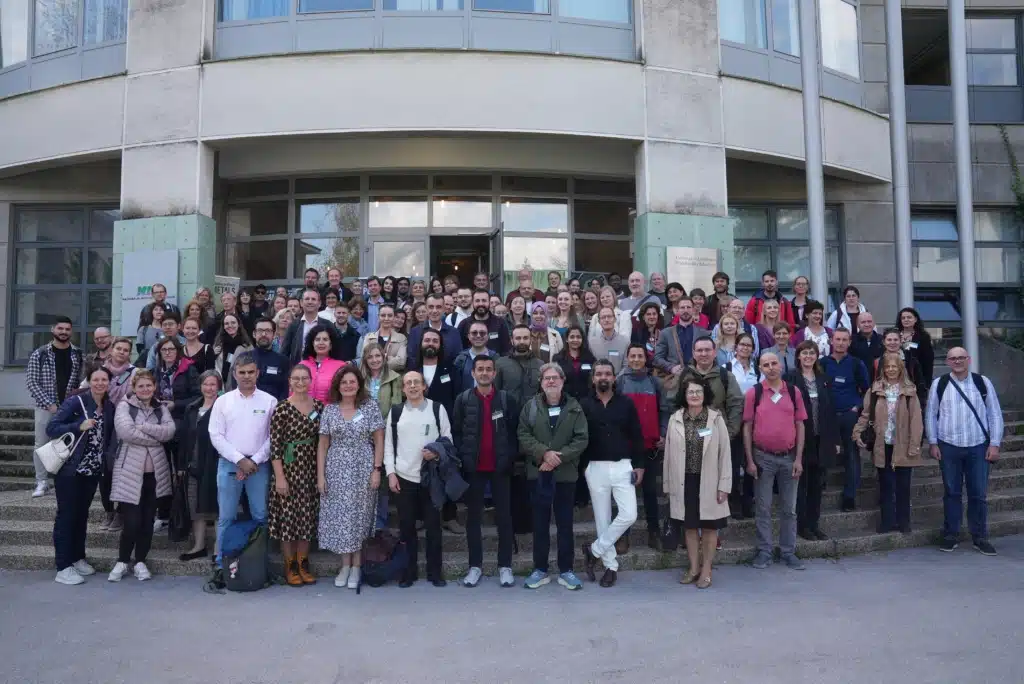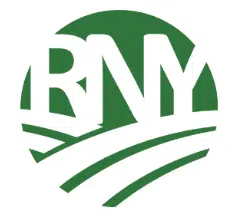Every year, Earth Day is a reminder that we need to take care of the planet’s natural resources. It’s a moment to stop and think about how things like saving water, planting trees or caring for our soil really do make a difference. It is in this spirit that several COST Actions are working to protect soil and support the people whose lives and livelihoods depend on it.

Healthy soils and resilient rural communities are the backbone of Europe’s sustainable future, underpinning both food security and ecosystem health. Three innovative COST Actions show how research networks can strengthen this foundation through coordinated scientific collaboration. By bringing together experts in soil science, plant biology, and rural development, these Actions are advancing solutions to pressing challenges – from protecting soil biodiversity and understanding plant responses to environmental stress and empowering rural communities.
Digging deep: Europe’s soil secrets go digital
The COST Action European Soil-Biology Data Warehouse for Soil Protection (EUdaphobase) addressed a pressing environmental need for European policymakers: a comprehensive database to monitor soil biodiversity and assess soil health across Europe. By building this database, which integrates diverse data on soil organisms with environmental factors, EUdaphobase laid the foundations for open data sharing in soil biodiversity research, moving the field towards greater collaboration and transparency. “EUdaphobase has created a European community of soil biologists who understand the need for data sharing, marking a shift towards open data in soil biodiversity research and an important step towards providing actionable knowledge for soil biodiversity conservation at the local level,” says Action Chair, Dr David Russell of the Senckenberg Museum of Natural History.

“The Edaphobase data infrastructure is a vital tool, not only for researchers but also as a basis for European soil policy. It serves as a primary reference for defining ‘intact’ soil biodiversity under specific environmental conditions, benefiting policymakers and conservation efforts“.
Dr David Russell, Chair of the Action EUdaphobase
EUdaphobase has made a significant contribution to environmental protection by filling critical data gaps in under-represented regions, such as the Balkan Peninsula, and developing models to scale up local biodiversity data to a broader European perspective. Through this work, researchers have gained valuable insights into the variation in soil biodiversity across different land uses, climates and habitats, providing a strong foundation for soil conservation in diverse ecosystems.
Building on this knowledge, the database provides reference points and essential thresholds for EU soil health directives. “The Edaphobase data infrastructure is a vital tool, not only for researchers but also as a basis for European soil policy,” explains Dr Russell. “Edaphobase serves as a primary reference for defining ‘intact’ soil biodiversity under specific environmental conditions, benefiting policymakers and conservation efforts“. Ongoing collaboration with European agencies also continues to refine ‘functional’ biodiversity indicators, which define ecological roles within soil ecosystems and provide the basis for future policy decisions.


EUdaphobase has had a lasting impact on the field of soil biodiversity, setting a new standard for data integration and guiding open-data soil research. Now integrated into German and European data infrastructures, including the Open European Science Cloud, EUdaphobase is positioned to become the leading resource for soil biodiversity assessment. This work directly supports the UN Sustainable Development Goals and the EU Soil Strategy by providing authorities with essential tools and data for effective soil protection and management.
Metals in farming
The COST Action Trace metal metabolism in plants (PLANTMETALS) tackled the complex role of trace metals in agriculture. Essential in small amounts, some trace metals, such as copper, iron, nickel, molybdenum and zinc, can become toxic when accumulated. Others, such as cadmium, have no function in most plants. In both cases, toxic accumulation results particularly from industrial activities and fertiliser use. By studying how plants absorb, process and detoxify these metals, PLANTMETALS offers solutions to reduce risks from both, deficiency and toxicity of these metals, and increase agricultural productivity.
The Action has made significant progress in understanding plant uptake, transport, physiological use, toxicity and detoxification of metals, identifying key genes and molecular pathways involved in these processes. This research has revealed the complex balance of metal metabolism in agricultural systems. “Understanding trace metal metabolism in plants is crucial for today’s agriculture,” explains Action Chair Professor Hendrik Küpper from the Biology Centre of the Czech Academy of Sciences. “These metals play vital roles, but their balance is delicate. Too much or too little can have serious consequences for both plant and human health”.

“Our interdisciplinary approach is helping to bridge the gap between science and agriculture, enabling practical solutions for farmers. Our findings directly contribute to safer food and environmental sustainability“.
Prof. Hendrik Küpper, Chair of the Action PLANTMETALS
Through extensive collaboration across 42 countries, PLANTMETALS has developed and shared standardised protocols for measuring metal levels and assessing risk. The network has conducted training workshops to equip researchers with these essential methodologies, promoting a unified approach to metal analysis in agriculture.
PLANTMETALS’ findings have led to concrete agricultural applications, supporting targeted fertilisation practices, improved breeding strategies and practical recommendations for managing metal toxicity. Working closely with fertiliser manufacturers, Action has developed knowledge and techniques to optimise micronutrient application, reducing environmental impact while improving crop quality and plant immunity, as shown by the scientific and educational publications on their website . “Our interdisciplinary approach is helping to bridge the gap between science and agriculture, enabling practical solutions for farmers,” adds Professor Küpper. In addition, PLANTMETALS’ research on hyperaccumulating plants is advancing soil phytoremediation techniques to address metal contamination.

Looking ahead, PLANTMETALS is preparing accessible ‘white papers’ to provide farmers with practical guidance on effective trace metal management, ultimately improving soil health and crop resilience. “Our findings directly contribute to safer food and environmental sustainability,” concludes Hendrik Küpper, highlighting the project’s lasting impact on agricultural practices.
From farm to future: youth in focus
The Rural NEET Youth Network: Modeling the risks underlying rural NEETs social exclusion (RNYN) Action focused on the unique and pressing issue of high NEET (Not in Employment, Education or Training) rates among young people in Europe’s rural areas, particularly in southern and eastern regions. Led by Dr Francisco Simões, it explored how social, economic and educational challenges particularly affect rural NEETs, deepening the North-South and East-West socio-economic divides across the continent. “Our Action addresses a complex social problem that has remained unaddressed by both research and policy: the high proportion of rural NEETs and the risks they face due to limited opportunities,” said Dr Simões.

“Our continued collaboration will help to inform rural youth policies at all levels, enabling a better future for younger generations in rural areas“.
Dr Francisco Simões, Chair of RNYN Action
RNYN’s findings, summarised in the Action publication, provided key insights into the barriers faced by rural NEETs, from limited access to employment services to the critical need for locally adapted education and training. Community engagement, education and flexible, person-centred employment services were highlighted as essential to reducing rural NEET rates. The Action also recognised the impact of Europe’s green and digital transitions on rural labour markets, identifying opportunities in youth entrepreneurship, new farming models and digitalisation that could support rural youth employment.
One of RNYN’s outstanding achievements is the European Rural Youth Observatory, a research-driven association that brings together researchers, policymakers and youth organisations to inform rural youth policymakers across Europe. Now a key member of European initiatives such as the European Alliance for Apprenticeships and the European Rural Pact Coordination Group, the Observatory is already informing decision-makers on approaches to rural youth inclusion. Dr Simões explains: “The Observatory has become a key player, providing insights that could redefine rural youth policy across the continent”.
The Observatory’s future impact will be amplified through its contribution to a comprehensive study on rural youth across Europe, conducted by the Youth Partnership—a think tank jointly led by the Council of Europe and the European Commission—that will shape the EU’s 2025 Youth Strategy.
The platform’s influence goes beyond policy, inspiring youth-centred collaborations and connecting rural youth representatives with decision-makers to ensure their voices are heard.
The RNYN Action members were awarded a COST Innovators Grant the Future Youth Information for Rural Areas (FYI-R), to develop a strategic web-based tool across 16 countries to collect real-time data on the needs of rural youth and provide policymakers with insights to make informed decisions. Through continued partnerships and expanding research initiatives, Dr Simões envisions RNYN and FYI-R role in European policy: “Our continued collaboration will help to inform rural youth policies at all levels, enabling a better future for younger generations in rural areas”.
Photos from the FYI-R training school held at Iscte in January 2025
Additional information
Read more about the Action European Soil-Biology Data Warehouse for Soil Protection (EUdaphobase)
Read more about the Action Trace metal metabolism in plants (PLANTMETALS)
Read more about the Action Rural NEET Youth Network: Modeling the risks underlying rural NEETs social exclusion (RNYN)
Read more about the CIG Future Youth Information for Rural Areas (FYI-R)








